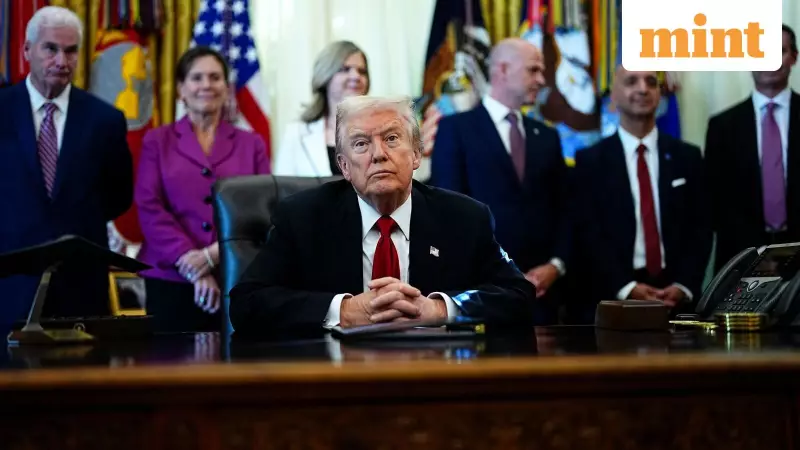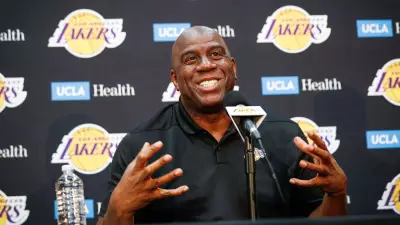
Historic Medicare Deal Transforms Obesity Treatment Access in America
In a landmark move that could reshape the pharmaceutical landscape, the Trump administration has secured a groundbreaking agreement with leading drug manufacturers Eli Lilly and Novo Nordisk that will dramatically expand access to obesity medications for millions of Americans. The deal, announced last week, represents a strategic shift from premium pricing to volume-driven growth in the rapidly expanding weight-loss drug market.
The Price-Volume Tradeoff: A Strategic Calculation
Under the new arrangement, Eli Lilly and Novo Nordisk will make their popular GLP-1 drugs available through Medicare for approximately $245 per month, with patients responsible for a $50 copay starting as early as April 2026. This marks a substantial reduction from previous list prices that often exceeded $1,000 monthly for these breakthrough treatments.
The agreement follows weeks of tariff threats and discussions about stricter pricing regulations that had concerned pharmaceutical executives and investors. Several industry leaders visited the White House to negotiate regulatory relief in exchange for price concessions. However, for Eli Lilly's David Ricks and Novo Nordisk's Mike Doustdar, who made their own pilgrimage to Washington, the strategy involved more than just damage control.
This deal doesn't merely establish a truce—it unlocks massive market expansion potential. By accepting lower prices, the companies have secured expanded Medicare coverage for obesity treatments, potentially doubling their patient base beyond those who currently pay out-of-pocket or have generous private insurance.
Market Expansion and Competitive Implications
The Medicare agreement opens access to approximately 30 million additional Americans, creating what Bernstein analysts estimate as a $27 billion annual sales opportunity. This represents a fundamental shift from serving affluent urban populations to reaching mainstream America.
While the apparent discount seems substantial, the net price reduction is less dramatic when considering what pharmaceutical companies actually receive after rebates and discounts to pharmacy benefit managers. According to Leerink Partners analyst David Risinger, the effective price reduction is only about 20% to 35% below what Medicare currently pays for diabetes medications like Mounjaro.
The timing appears strategically advantageous for both companies. Both Eli Lilly and Novo Nordisk are preparing to launch oral versions of their obesity drugs, and the Trump administration is granting special "priority review" vouchers through the Food and Drug Administration to accelerate approval processes. As part of the arrangement, the lowest dose of Lilly's pill is expected to be available directly to consumers for $149 monthly.
Broader Market Impact and Future Competition
This agreement creates significant challenges for potential market entrants including Pfizer, Roche, and Amgen. By establishing a lower price floor, Lilly and Novo Nordisk have erected substantial barriers for competitors who must invest billions in manufacturing capacity while facing thinner profit margins.
The deal also threatens compounding pharmacies that produce generic versions of GLP-1 drugs. More than one million Americans currently purchase these alternatives through telehealth providers like Hims & Hers Health at reduced prices. While these options will likely remain available, falling prices for branded medications will diminish their cost advantage.
The impact on commercial insurance markets remains uncertain. Outside government programs, both companies have committed to selling their injectable drugs directly to consumers for approximately $350 monthly. While they claim this won't affect employer-sponsored insurance pricing, some spillover effect seems inevitable as pharmacy benefit managers now have a clear reference price for negotiations.
President Trump has hailed the agreement as a major achievement, while Mehmet Oz, administrator of the Centers for Medicare and Medicaid Services, optimistically suggested that Americans could lose "billions of pounds by the midterm elections."
For the pharmaceutical giants, this strategic pivot acknowledges an inevitable industry evolution. Drug manufacturers routinely calculate the price point that maximizes overall profitability rather than margin per prescription. Both companies likely view this agreement as accelerating an inevitable market transition where scale, rather than premium pricing, drives success in the obesity treatment sector.





